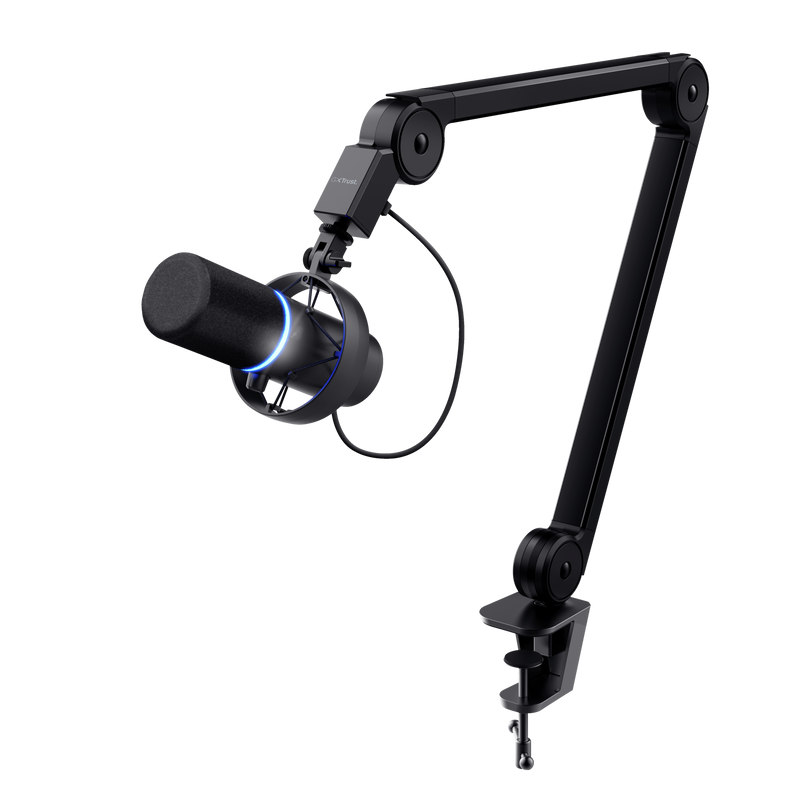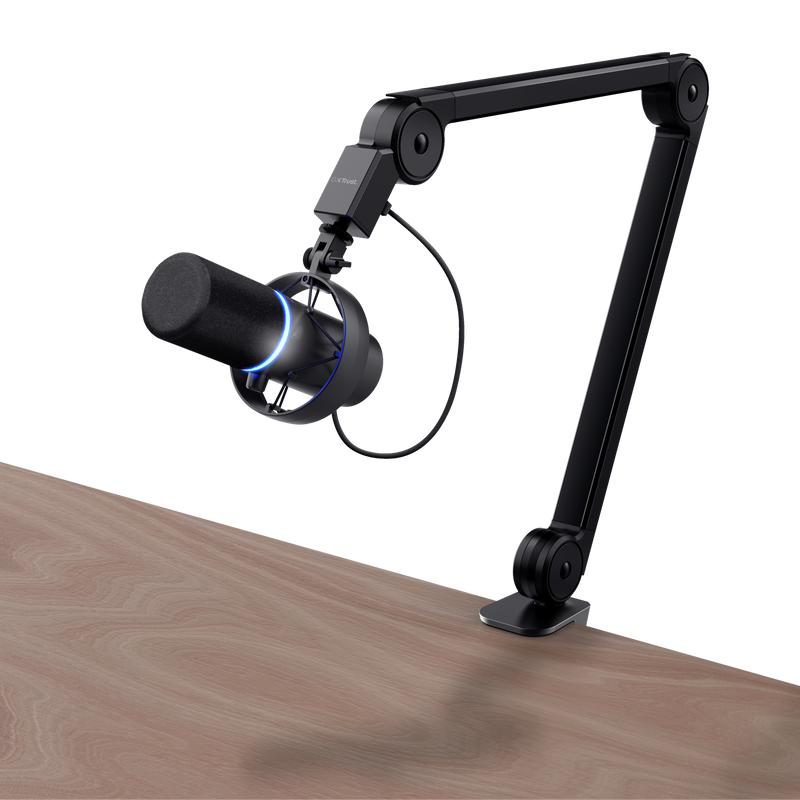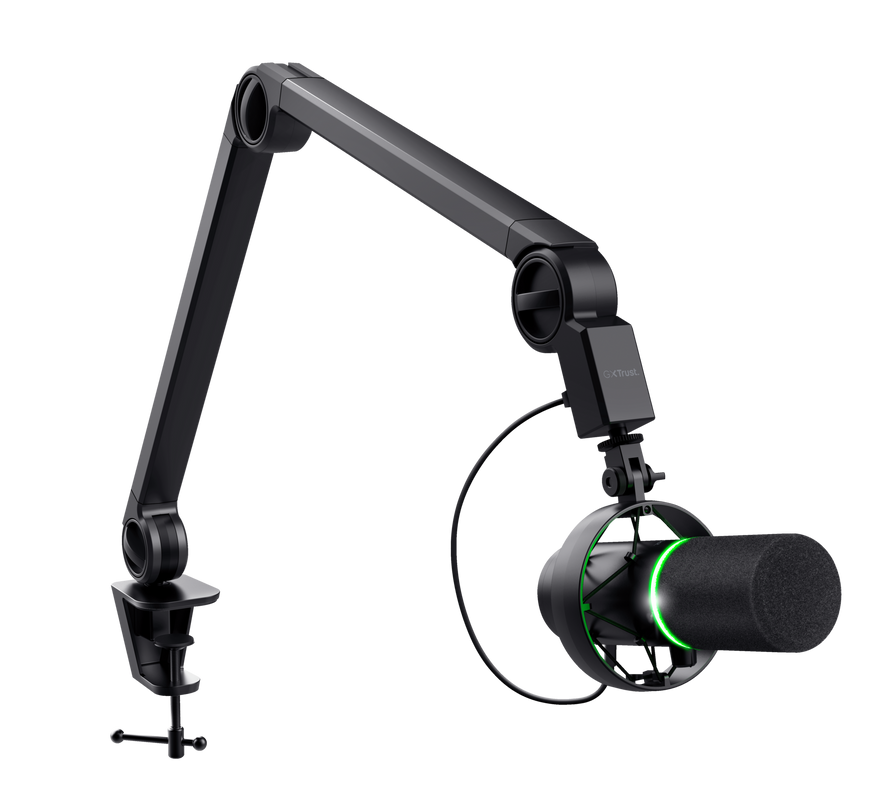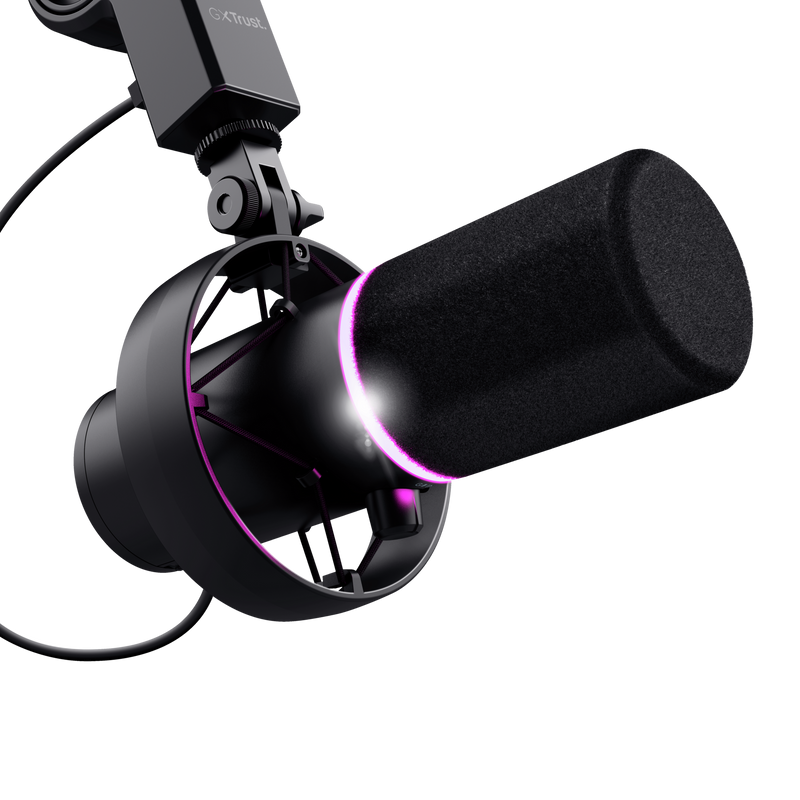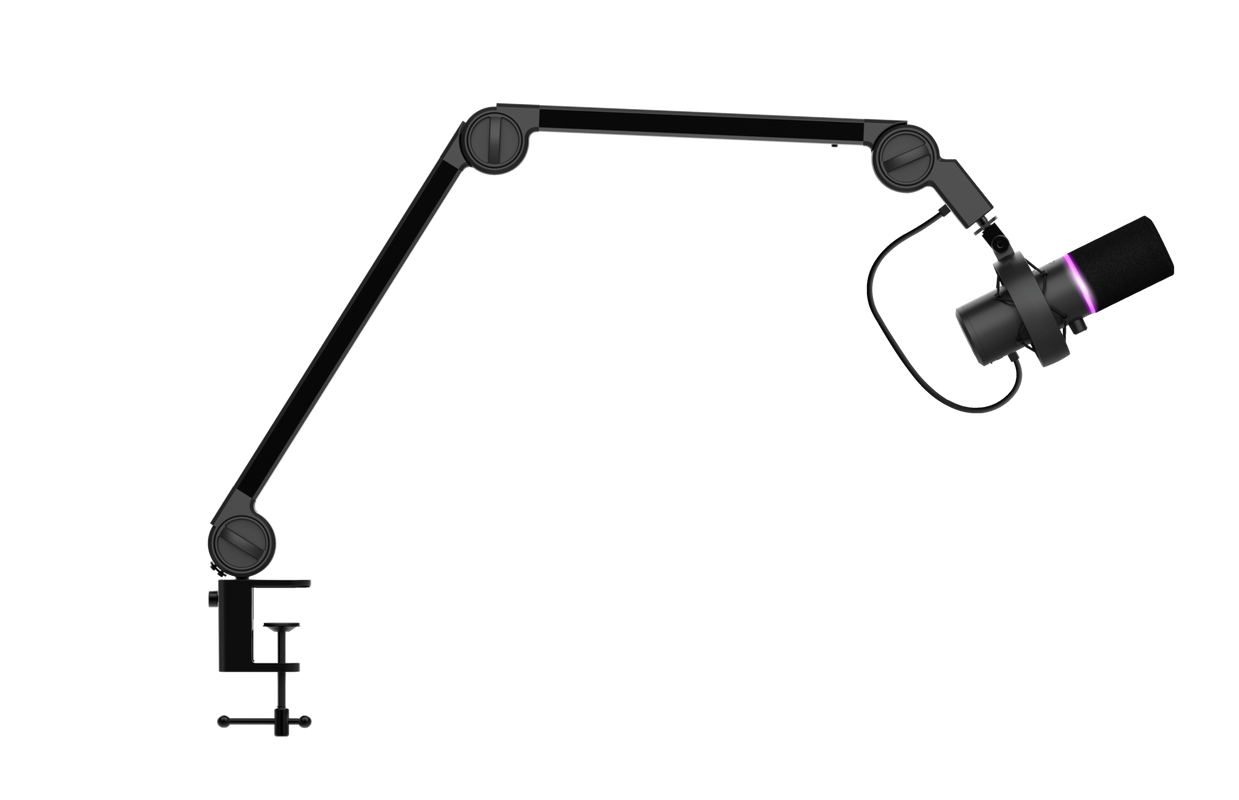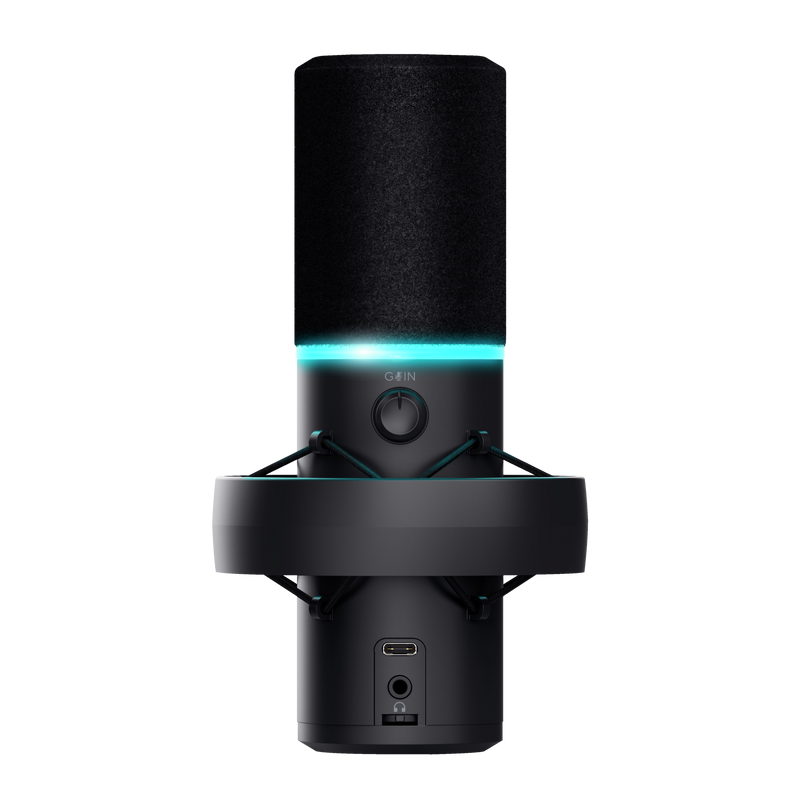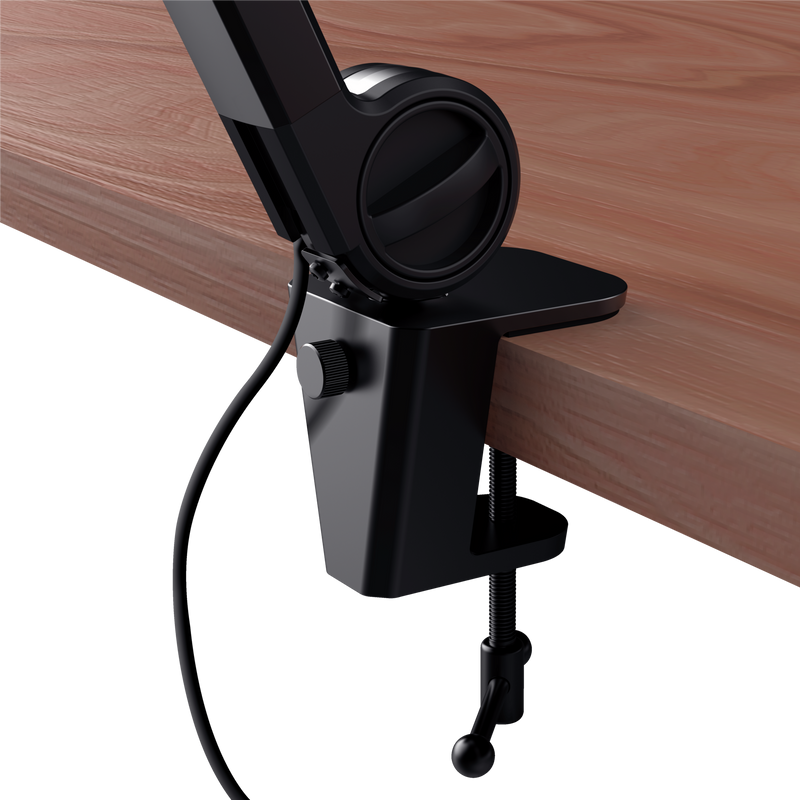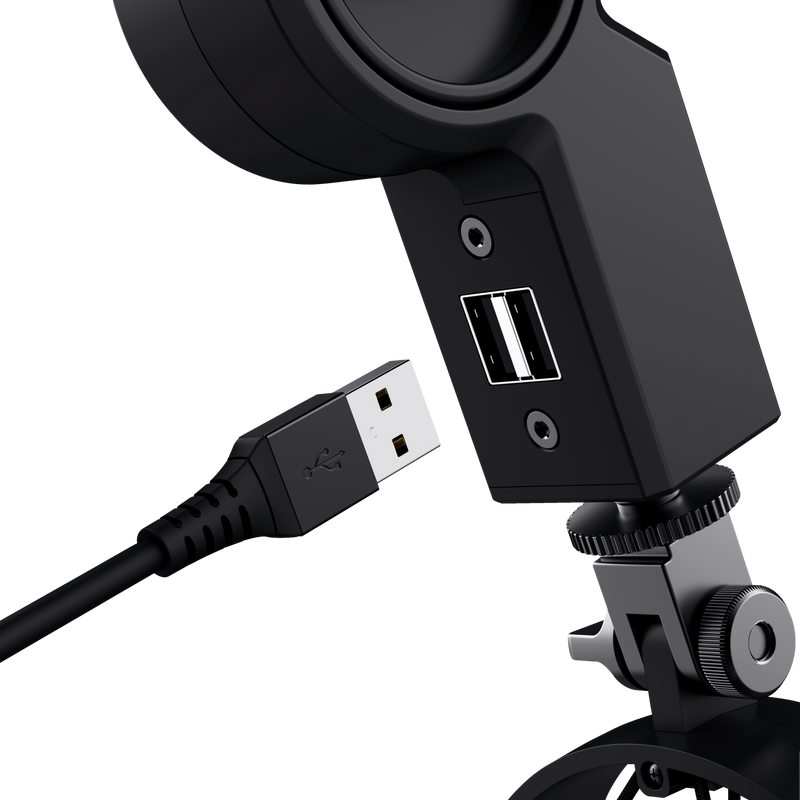GXT 255+ Onyx
Micrófono profesional y brazo, con nivel de estudio; calidad de sonido profesional y aspecto depurado
Calidad de estudio
Produce contenido de nivel profesional con el micrófono GXT 255+ Onyx de Trust, con brazo ajustable, soporte con efecto amortiguador y filtro de rejilla. Todo esto proporciona un sonido nítido y limpio, perfecto para la difusión a gran escala.
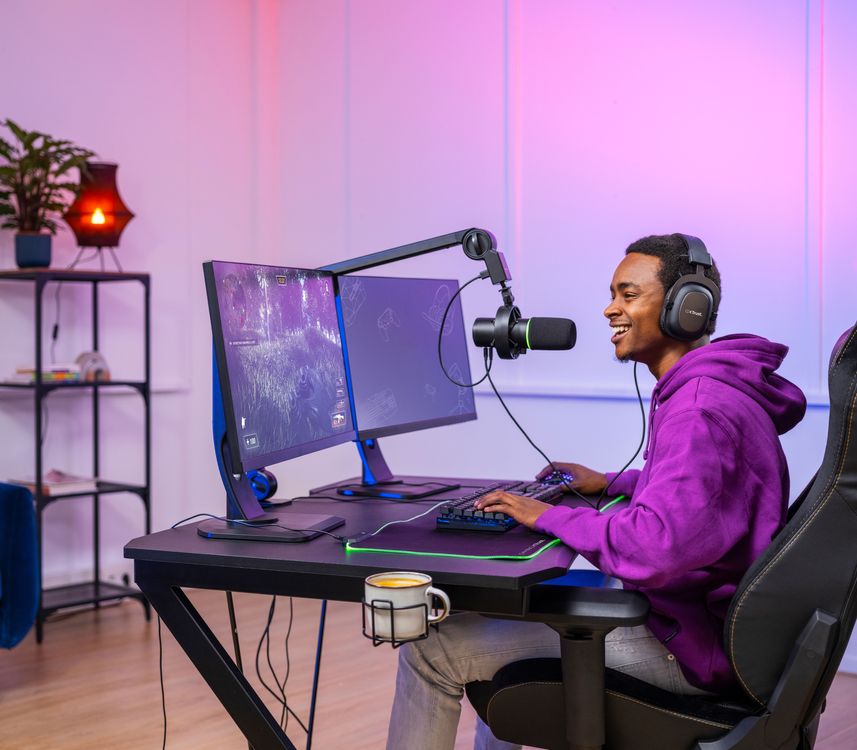
Características Principales
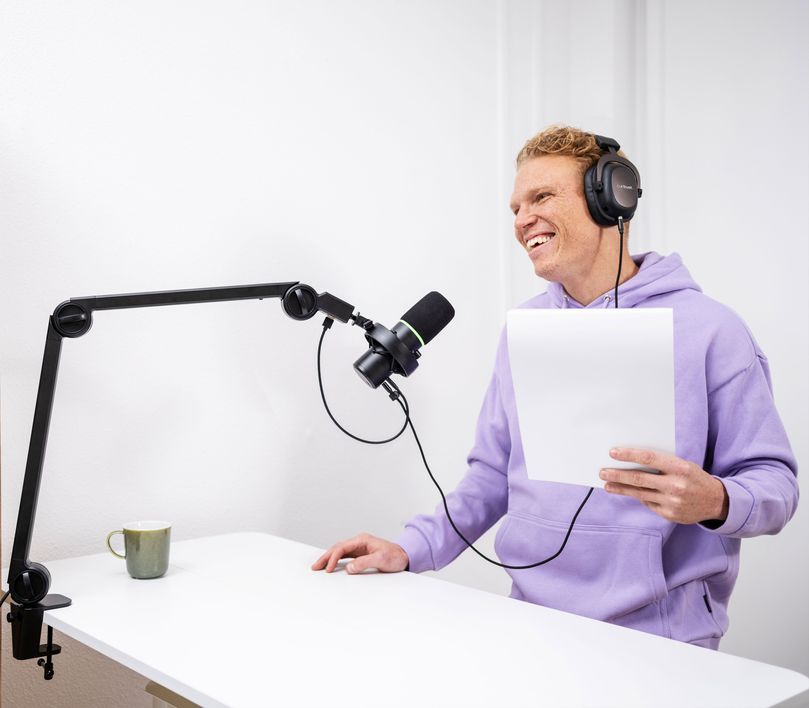
Grabar y crear
Transmisiones, podcasts, vlogs... ¡lo que tú quieras! El patrón de grabación cardioide del micrófono de membrana captura el audio y reduce el ruido de fondo, asegurando la nitidez de tu voz.
Sin latencia, con facilidad
Un puerto de control de auriculares de latencia cero permite escuchar lo que se está grabando en tiempo real, y los mandos de ganancia y silenciamiento de la parte frontal del micrófono permiten utilizar el dispositivo fácilmente.
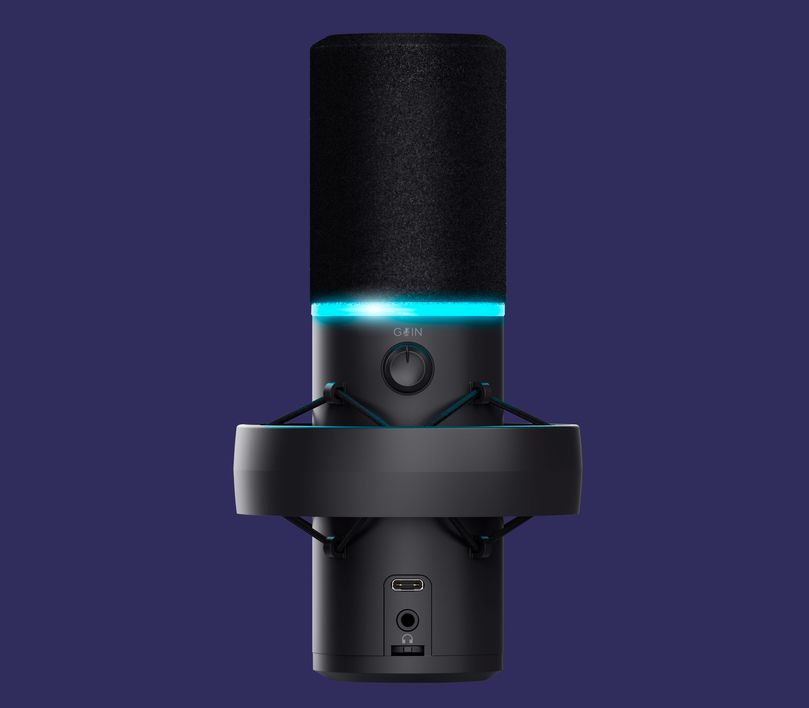

Una posición privilegiada
El brazo del micrófono se mantiene en su sitio mediante un soporte de mesa con abrazadera en C, mientras que la tensión de las articulaciones -fácilmente ajustable- simplifica al máximo la grabación.
Conectar, encender y ponerse en marcha
Un anillo luminoso LED ajustable aporta color al set-up de producción, mientras que un hub USB de 2 puertos añade comodidad adicional. Además, la conexión USB digital permite empezar a grabar al instante.

Especificaciones
Features
Size & Weight
Control
Connectivity
Audio
Microphone
Mount
Compatibility
Información extra
Micrófono USB
Brazo para micrófono
Soporte de suspensión
Cable USB
Manual del usuario
Puerto USB
Windows 10, 11
macOS 10.15, 11, 12
Chrome OS
Descargas
Declaración UE de conformidad
Versión 1.0 | Varios idiomas
Declaración UE de conformidad
Preguntas frecuentes (FAQ)
- Assemble the microphone and set it in your preferred position
- Connect the USB-plug to the USB-connection of the computer
- Set the microphone as the default sound input and the speaker as the default sound output device on the computer.
- Check the microphone properties and on Windows 10 the Microphone Privacy settings.
- The microphone is ready to use
The microphone arm is suitable for desks with up to 4.8 cm thickness.
The maximum table thickness should not be higher than 45mm.
By long-pressing (4 seconds) the button on the bottom of the mic, you switch on/off the light. By clicking the same button you start/stop the color cycle.
You switch on/off the microphone by pressing the microphone volume button on the front.
If you want the music to be loud, but the monitor volume low, you turn the volume button on the microphone high, and keep the volume in the playback/mic levels low.
There are 5 volume options via this microphone
- 2 buttons on the microphone:
mic volume
headset/speaker volume - 3 options in Windows:
Sound Control Panel > Playback > click on device > Properties > Levels > Speakers/Headphones
Sound Control Panel > Recording > click on device > Properties > Levels > Microphone Array
Sound Control Panel > Recording > click on device > Properties > Levels > Microphone Boost
Check both the headset volume on the computer, as well as the headset volume on the microphone itself. The headset volume button is located on the front of the microphone, right above the headset connection.
Check both the microphone volume on the computer, as well as the microphone volume on the microphone. The microphone volume button is located on the front of the microphone, right above the headset volume button.
The standard microphone volume in Windows is 2.0 dB, which should be sufficient for most purposes.
The red light indicates that the mic mute function has been activated.
When mute is activated, the buttons will not function.
Si el producto todavía está en garantía, le rogamos ir al punto de venta donde lo ha adquirido, provisto de una prueba de compra. Allí se lo reemplazarán por uno nuevo.
En caso de defectos, devuelva el producto a su revendedor con una descripción del fallo, prueba de la compra y todos los accesorios.
Durante el periodo de garantía recibirá un producto de repuesto del revendedor si hubiera disponibles.
Para nuestras condiciones de garantía puede consultar:
https://www.trust.com/support/warranty
The pick-up pattern of a microphone is the sensitivity to sound relative to the direction or angle from which the sound arrives, or how well the microphone "picks up" the sound from different directions. The most common types are: Cardioid, Omnidirectional, Unidirectional, Bidirectional.
CARDIOID
The most commonly used pattern is most sensitive at 0° (the front) and least sensitive at 180° (the back). This isolates it from unwanted ambient sound. You can use this for most recording applications. It is easy to get a good signal as the cardioid pattern blends out a bad sounding room, a noisy fan in the background, etc.
OMNIDIRECTIONAL
The omnidirectional microphone has equal sensitivity at all angles. This means it picks up sound evenly from all directions. Therefore, the microphone need not be aimed in a certain direction. It will be especially useful in good sounding rooms.
UNIDIRECTIONAL
Unidirectional microphones are most sensitive to sound arriving from directly in front (at 0°) and less sensitive in other directions. This makes unidirectional microphones effective at isolating the desired sound from both unwanted sound and ambient noise.
BIDIRECTIONAL
A bidirectional microphone (with figure-8 pattern) picks up the sound from in front of the microphone (at 0°) and from the rear (at 180°), but not the side (at 90° and 270°). It can be beneficial in situations where you do not want a signal coming from a 90° angle to bleed into the microphone.
Contacta con nosotros
Contacta con nosotros
Por favor, consulte primero nuestras Preguntas frecuentes, es probable que encuentre la respuesta allí.
¿No pudo encontrar la respuesta en las preguntas frecuentes? Complete el formulario a continuación con la mayor cantidad de información posible y uno de nuestro personal del servicio de asistencia responderá lo antes posible. Nuestros mensajes son contestados en el orden en que son recibidos.
Después de enviar el formulario, aparecerá un mensaje de confirmación con su número de referencia. Esta confirmación también se ha enviado a su dirección de correo electrónico al mismo tiempo. Si no ha recibido este mensaje, revise su carpeta de correo no deseado. Si tampoco puede encontrar la confirmación allí, envíe el formulario nuevamente con su dirección de correo electrónico correcta.
